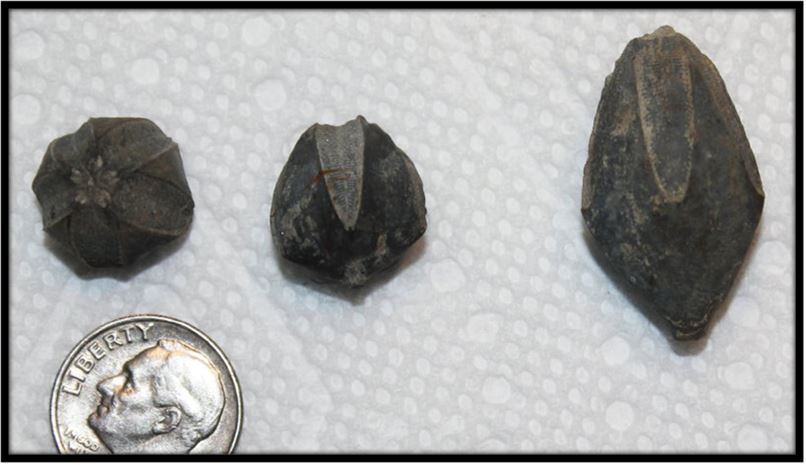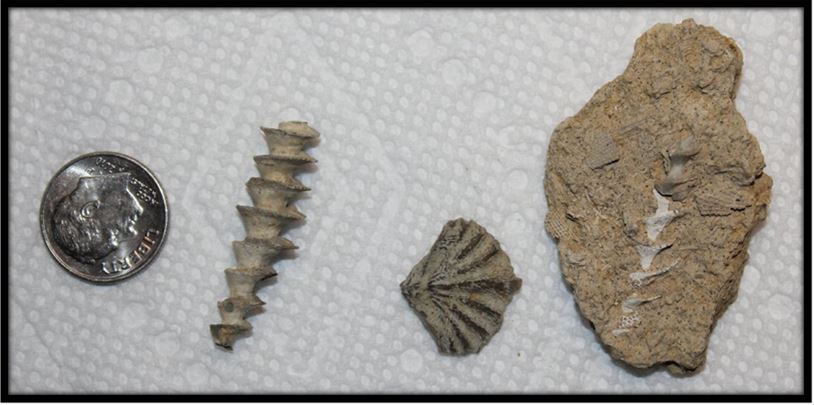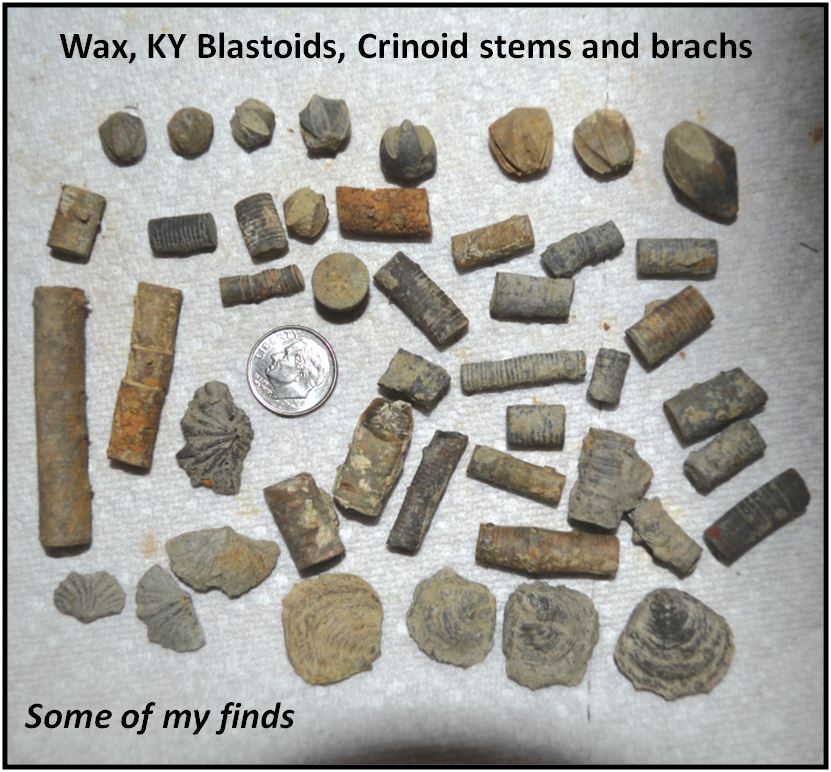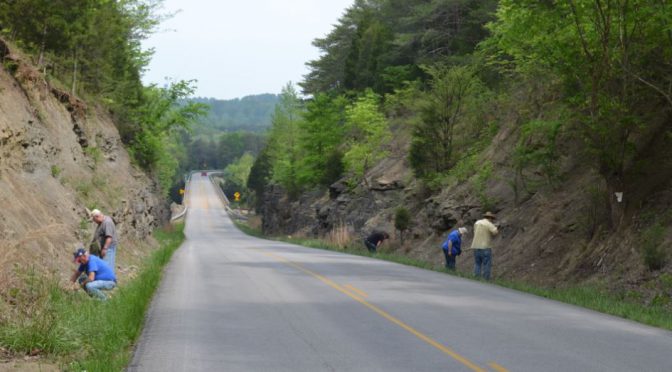Published in the June, 2017 WCGMC Newsletter
In late April, six members of Wayne County Gem and Mineral Club joined a Buffalo Geological Society fossil collecting trip to the Cincinnati area led by Jerry Bastedo. We visited several productive sites, but I thought I would direct this month’s site of the month to the southernmost collecting spot we visited. Most of the trip focused on quarries and roadcuts that expose Ordovician and Silurian strata in the Cincinnati Arch. However, on Saturday, we climbed all the way up to the Mississippian by driving several hours south to a modest roadcut in Wax, Kentucky where we collected blastoids in the Glen Dean Formation.

Blastoids are an extinct form of stemmed echinoderm. They first appeared in the Ordovician, but reached their greatest abundance and diversity in the Mississippian. The entire class of echinoderms referred to as Blastoidea went extinct 250 million years ago during the Great Extinction Event marking the end of the Permian Period and the Paleozoic Era.
It was the blastoid body (or theca) that we sought and found in the Mississippian roadcuts just south of the small town of Wax (see photo on page 1). They are not large (smaller than dimes), but are distinctive resembling small hickory nuts and could be found either loose in the drainage or protruding from the eroding shale.

Much like crinoids, blastoid bodies were attached to a stalk comprised of disc-shaped plates, all of which was attached to the seafloor by a holdfast. The animal waved in the current. Long thin arms called brachioles extended from the body trapping food particles and bringing them to the animal’s mouth at the top of the theca. The Pentremites on the left in the preceding photo is oriented to display the mouth at the top. Notice the 5-fold symmetry also.
Our fossil finds there were not restricted to echinoderms. Several small brachiopods were present with both valves preserved. But perhaps the most interesting find for many of us was the unique screw shaped bryozoan aptly named Archimedes. These were found both loose and in matrix, both of which are shown below on either side of a small brachiopod.


